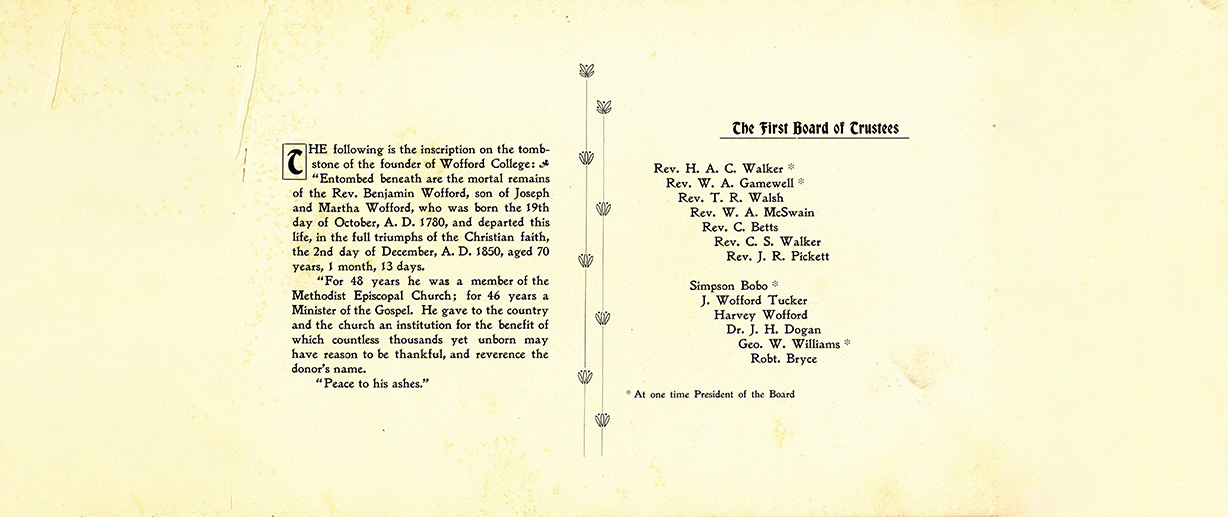By Phillip Stone ’94
Wofford’s connection to the United Methodist Church goes back over 170 years, and, in many ways, the relationship precedes the founding of the college.
Methodism started as a movement within the 18th century Church of England, and John Wesley, the founder of Methodism, remained an Anglican priest his entire life. Wesley often talked about “the connection” between members, local churches and clergy, and that connectional structure, with shared liturgy, values and ministries, continues today. When Methodists arrived in North America, the movement spread, and after the American Revolution, Methodism became an independent denomination. Education was a priority for the new church, and as Dr. Ron Robinson ’78, Perkins-Prothro Chaplain and Professor of Religion, often notes, “Methodists founded churches and colleges, and they knew the difference.”
Methodist ministers profoundly shaped Benjamin Wofford, and he spent a few years as an itinerant Methodist minister himself before family concerns led him to stop traveling. He retained his ordination and later helped found Central Methodist Church in Spartanburg. David Duncan Wallace’s History of Wofford College and other sources note Ben and Anna Todd Wofford’s interest in founding a college and their support of other Methodist colleges. No doubt the influence other Methodist ministers had with Ben Wofford shaped his plans. When he founded Wofford College in his will, at least part of his goal was to create a college for the South Carolina Methodist Conference. The will placed the college “under the control and management of the Methodist Episcopal Church of my native state, South Carolina.” The majority of the trustees named in his will were South Carolina Methodist clergy.
South Carolina’s Methodists supported Wofford and other colleges generously over the years. While Benjamin Wofford’s gift got the college started, other Methodists quickly joined in to help the college financially. Annual apportionments from the conference were a vital source of funds, and without them, it’s not certain that the college would have survived the lean times after the American Civil War. Many of the college’s fundraising campaigns in the 19th and early 20th centuries used the church’s structure to help get organized.
The college supported the work of the Methodist Church as well. While there was never a requirement that faculty or trustees had to be Methodists, many were, and they were often frequent speakers or guest preachers in churches throughout the state. Quite a few early graduates went on to serve as clergy in South Carolina, and they often received their licenses to preach while still students. Student publications showed a keen awareness of the affairs of the church. William Wallace Duncan, an 1858 graduate, was the first alumnus to become a Methodist bishop in 1886, and he was serving as a faculty member when he was elected. He later became the chair of the board of trustees. In the 20th century, President Henry Nelson Snyder, though a layman, served on a number of significant national church committees, including the commission that drafted the 1935 hymnal and the commission that steered the reunification of the northern and southern branches of the church in 1939.
The relationship continues today. Wofford is one of just over 100 colleges and universities related to the United Methodist Church. Members of the Wofford College Board of Trustees are officially elected by the South Carolina Annual Conference each year upon nomination from the board itself. The Annual Conference’s senior college fund still supports scholarships for United Methodist students at Wofford. The conference archives are located at Wofford. Among its many treasures, Wofford’s archives has an ordination certificate signed by John Wesley, which helps show how the connection to early Methodism continues to this day.
